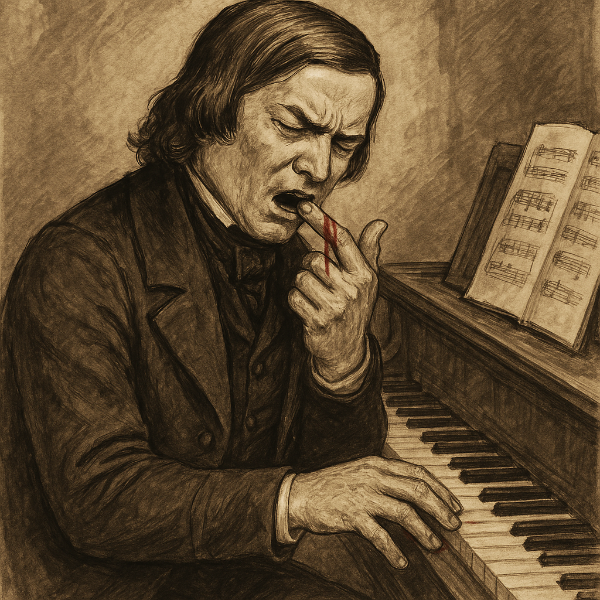The Gallica digital library at the Bibliothèque Nationale in Paris is one of the great research treasuries of the world. It was established in 1997 and now holds more than 10 million documents accessible online: books, magazines, newspapers, photographs, cartoons, drawings, prints, posters, maps, manuscripts, antique coins, scores, theatre costumes and sets, audio and video materials. We were looking at it the other day for opera costumes and found a collection of designs by Jacques Drésa, done for the Paris Opéra.
Jacques Drésa (1869–1929), the pseudonym of André Saglio using the last letters of his first name and the first letters of his last name, designed costumes in Paris in the early 20th century. He designed costumes in 1915 for a ballet setting of Ravel’s 4-hand piano suite, Ma mère l’Oye, as one of the important commissions early in his career, for the Théâtre des Arts.
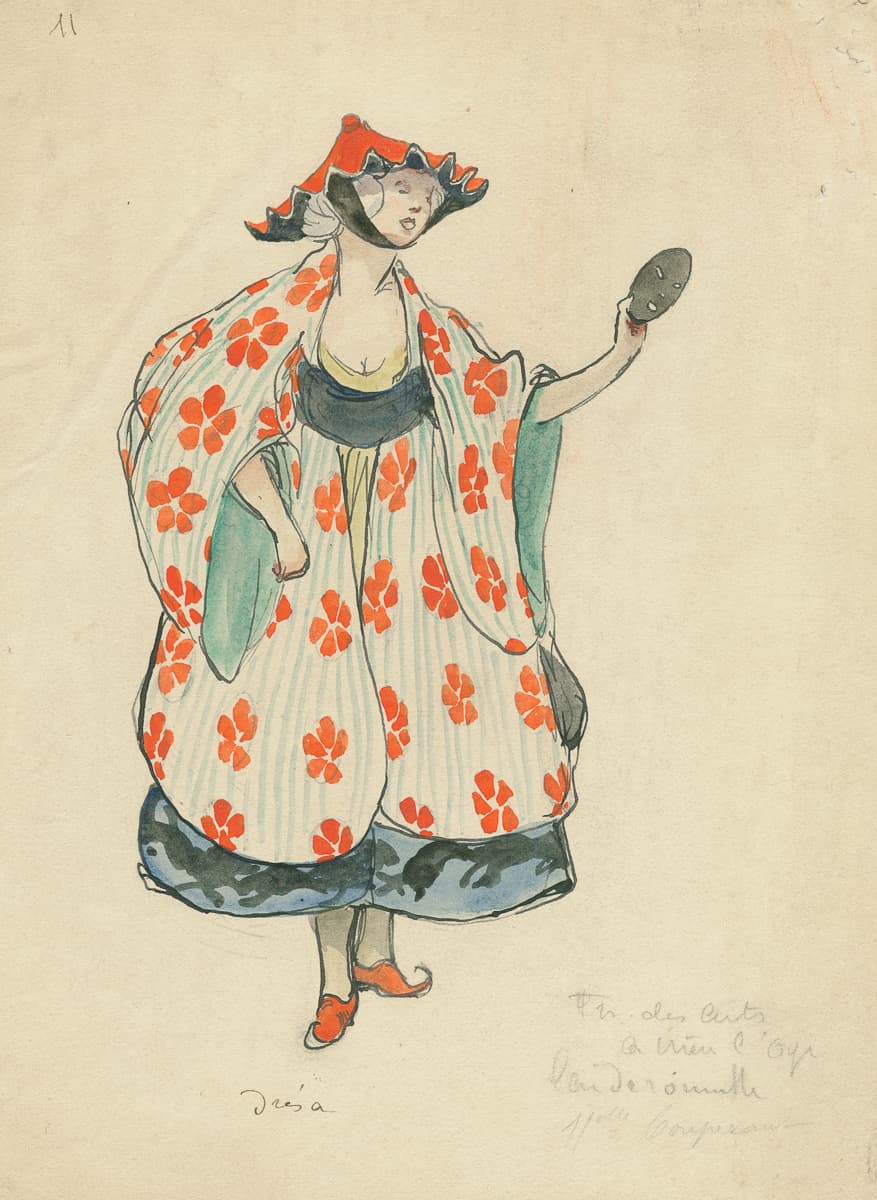
Drésa: Laideronnette, empress of the pagodas, costume for Ma mère l’Oye, ballet by Maurice Ravel, 1912
For Paris Opéra, Gallica holds Drésa’s designs for Rameau’s Castor et Pollux of 1918, Mozart’s Magic Flute of 1922, for Bruneau’s opera Le jardin du paradis given in 1923, for a 1927 production of Richard Strauss’ Der Rosenkavalier, and for a 1928 production of Puccini’s Turandot.
For Castor and Pollux, the Bibliothèque Nationale holds 56 costume designs in colour and as drawings. He had to design not only for the principals (Castor, Pollux) but also for the gods (Jupiter, Mercury), the dancers, and a group of Spartan soldiers.
Jean-Philippe Rameau: Castor et Pollux (1754 version) – Overture (Aradia Ensemble; Kevin Mallon, cond.)
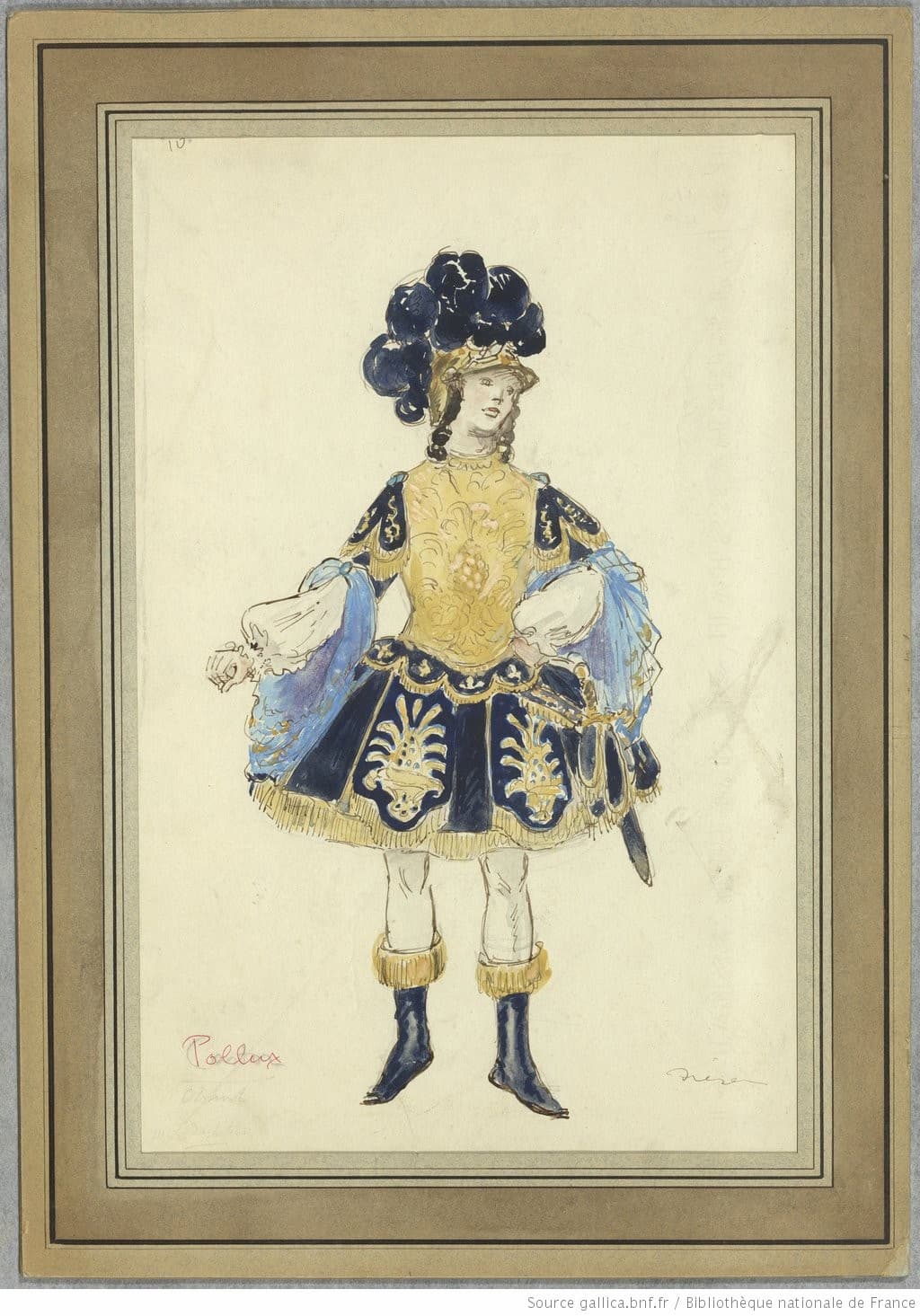
Drésa: Pollux, fol. 10r, 1918 (Gallica ark:/12148/btv1b525040769)
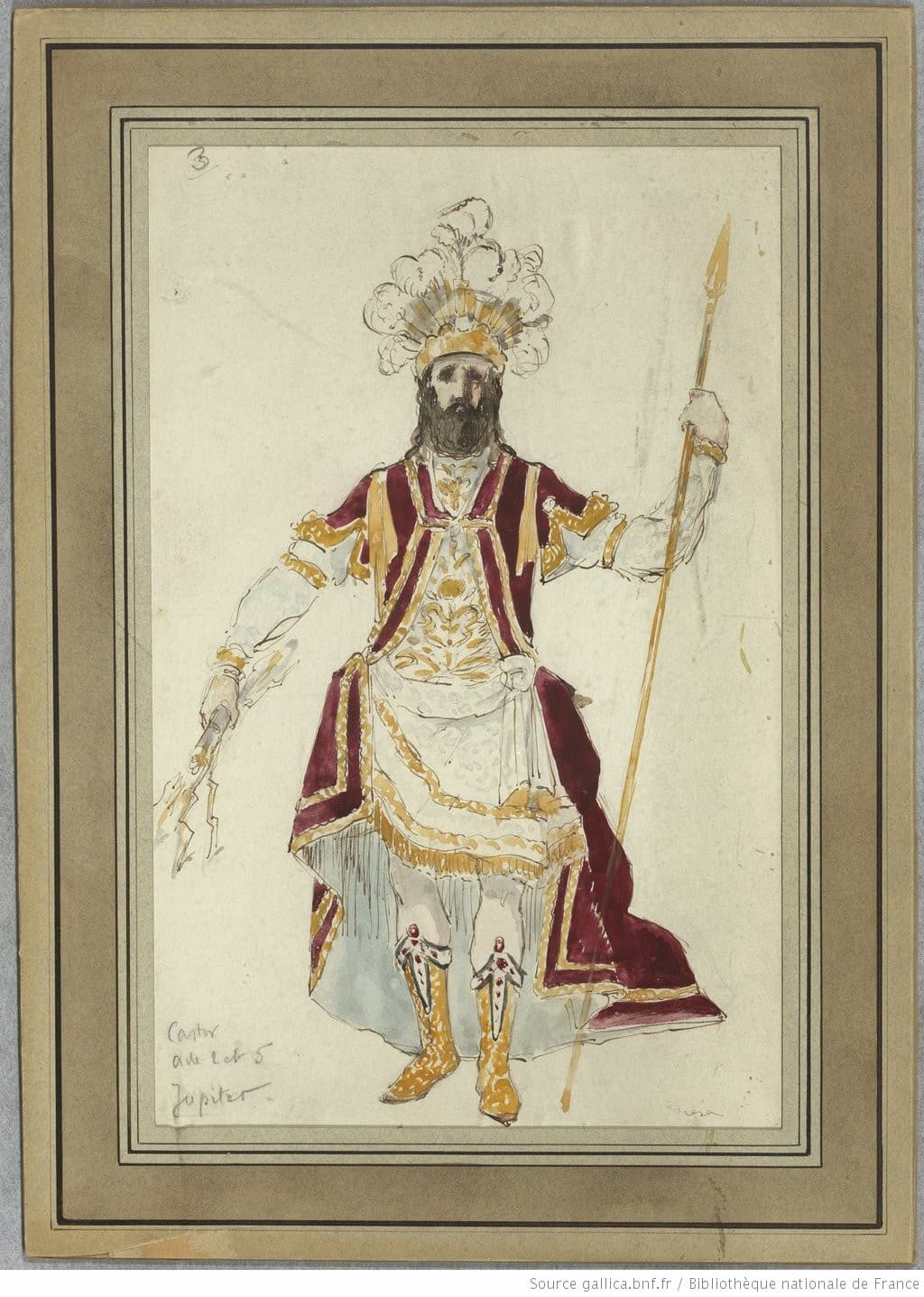
Drésa: Jupiter, fol. 3r, 1918 (Gallica ark:/12148/btv1b525040769)
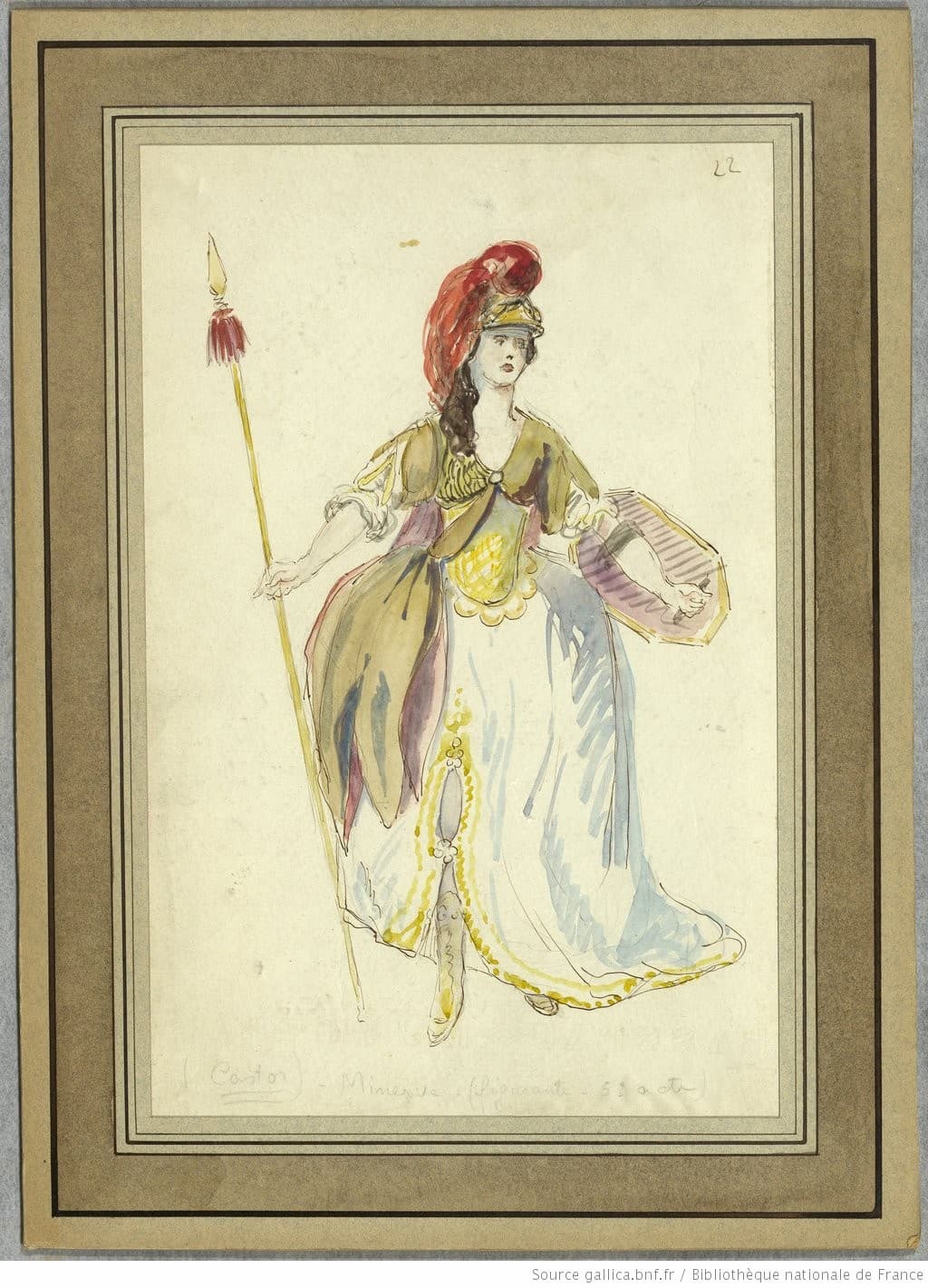
Drésa: Minerva, fol. 19r, 1918 (Gallica ark:/12148/btv1b525040769)
Chorus and dancer’s costumes include those for a 3rd act set of furies and for ‘ombres heureuses’, blessed spirits.
Jean-Philippe Rameau: Castor et Pollux (1754 version) – Act IV Scene 4: Qu’il soit heureux comme nous (Chorus of Blessed Spirits) (Aradia Ensemble; Kevin Mallon, cond.)
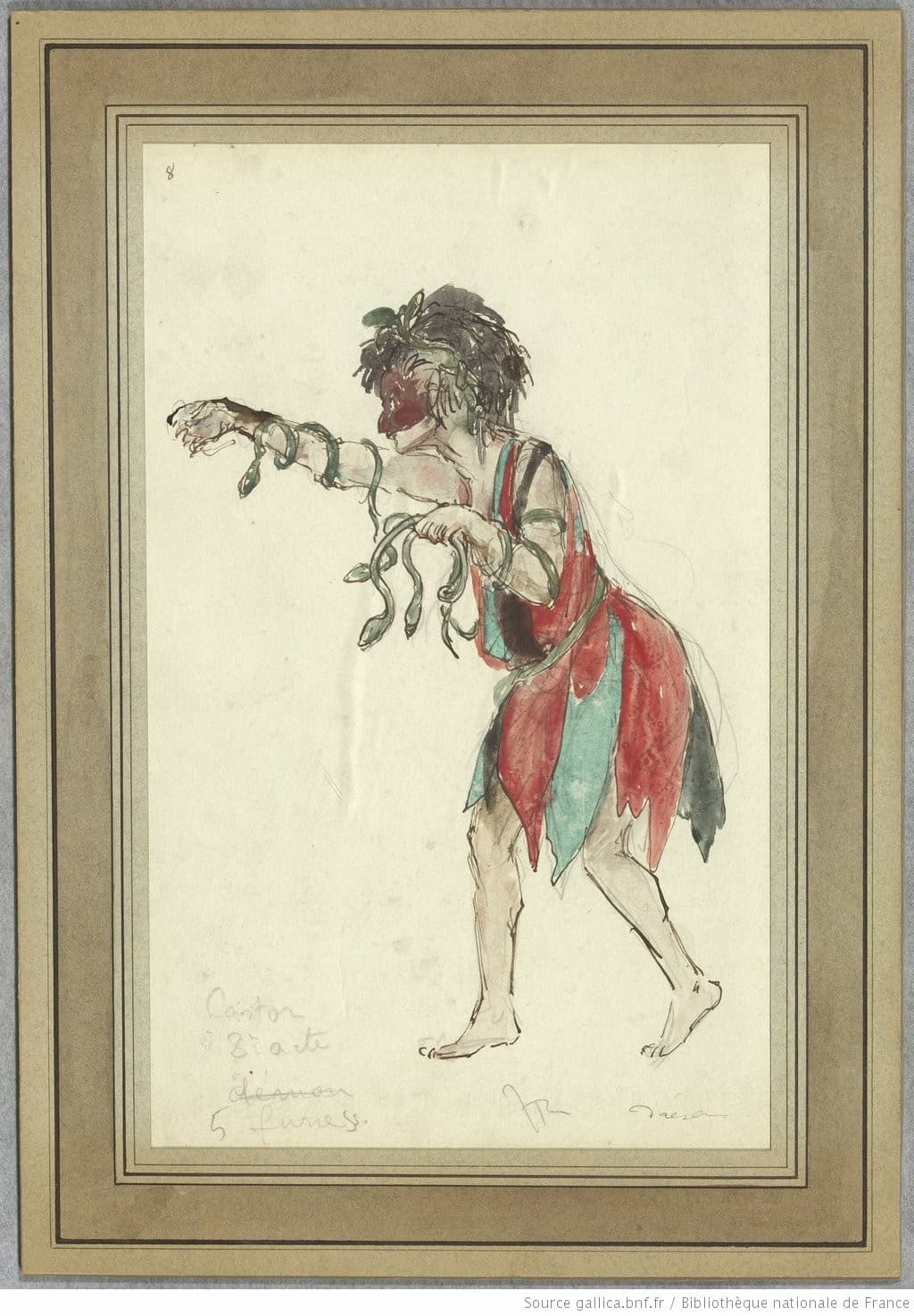
Drésa: 5 furies, fol. 6r, 1918 (Gallica ark:/12148/btv1b525040769)
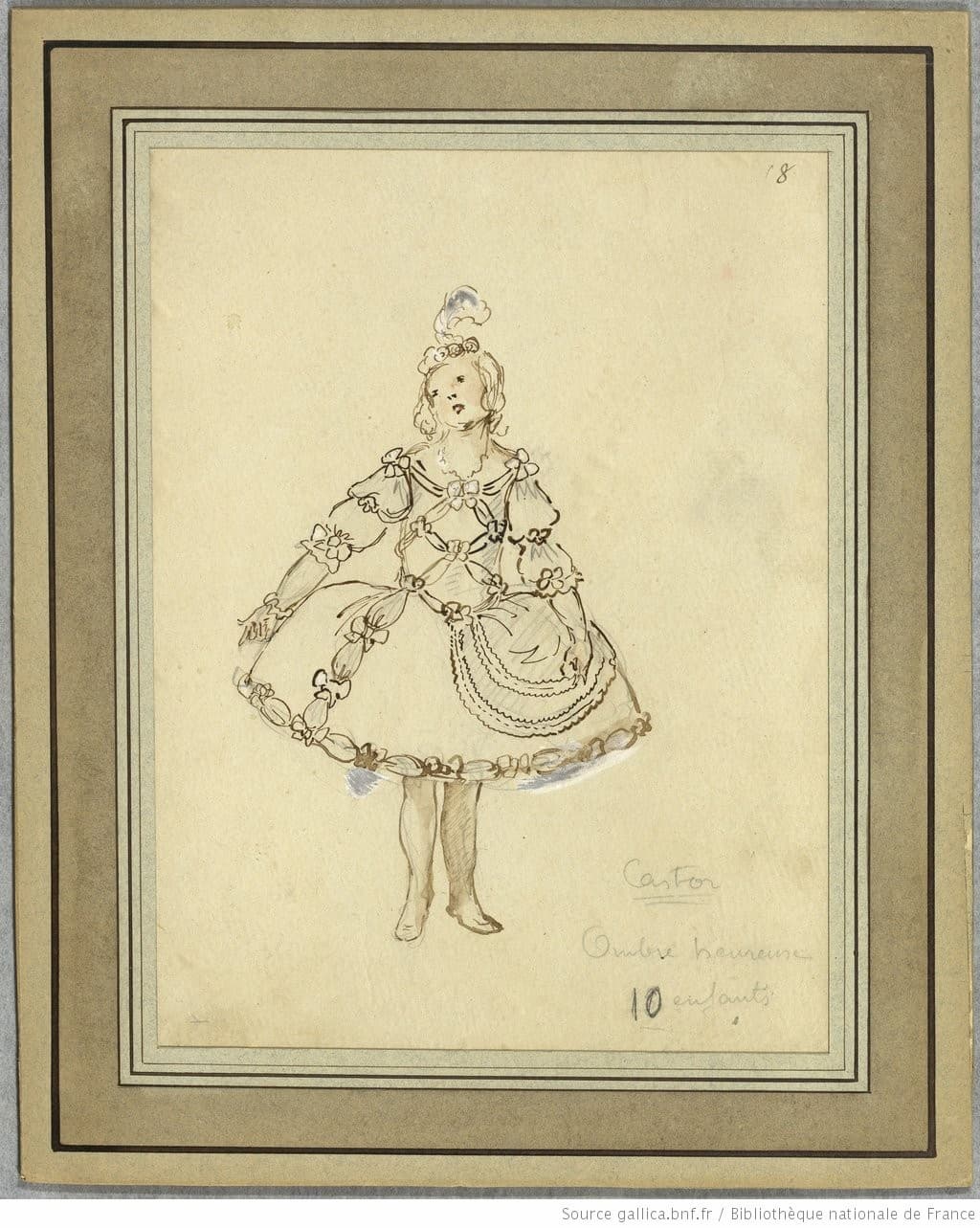
Drésa: Ombre heureuses (children), fol. 15r, 1918 (Gallica ark:/12148/btv1b525040769)
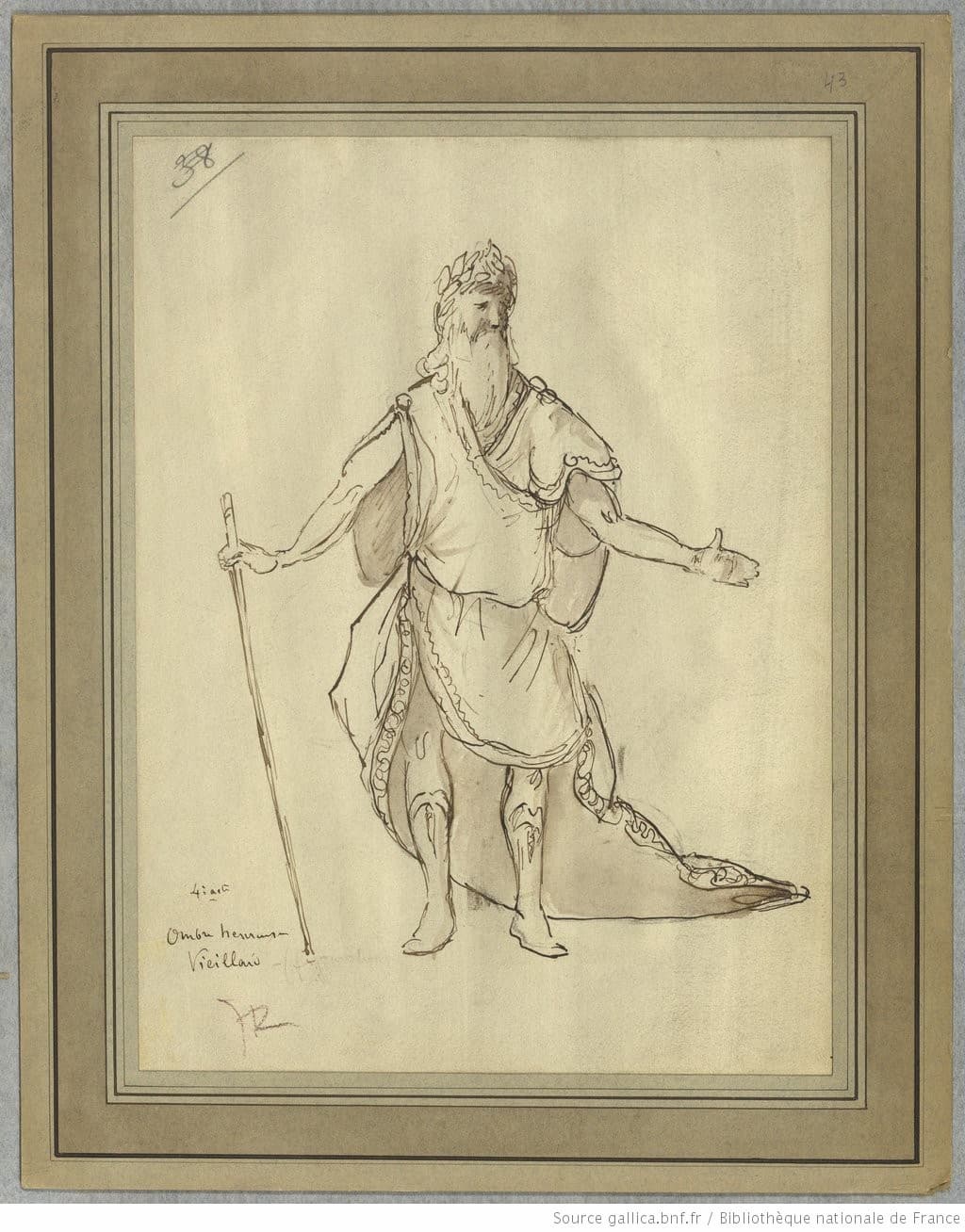
Drésa: Ombre heureuses (old man), fol. 40r, 1918 (Gallica ark:/12148/btv1b525040769)
For La Flûte enchantée (The Magic Flute), Papageno and Papagena have the best costumes, whereas Tamino’s and Pamina’s costumes fall somewhere between a medieval play and a Greek drama.
Wolfgang Amadeus Mozart: Die Zauberflöte (The Magic Flute), K. 620: Act II – Pa-Pa-Pa-Pa-Pa-Pa-Papageno (Lotte Leitner, Papagena; Georg Tichy, Papageno; Budapest Failoni Chamber Orchestra; Michael Halász, cond.)
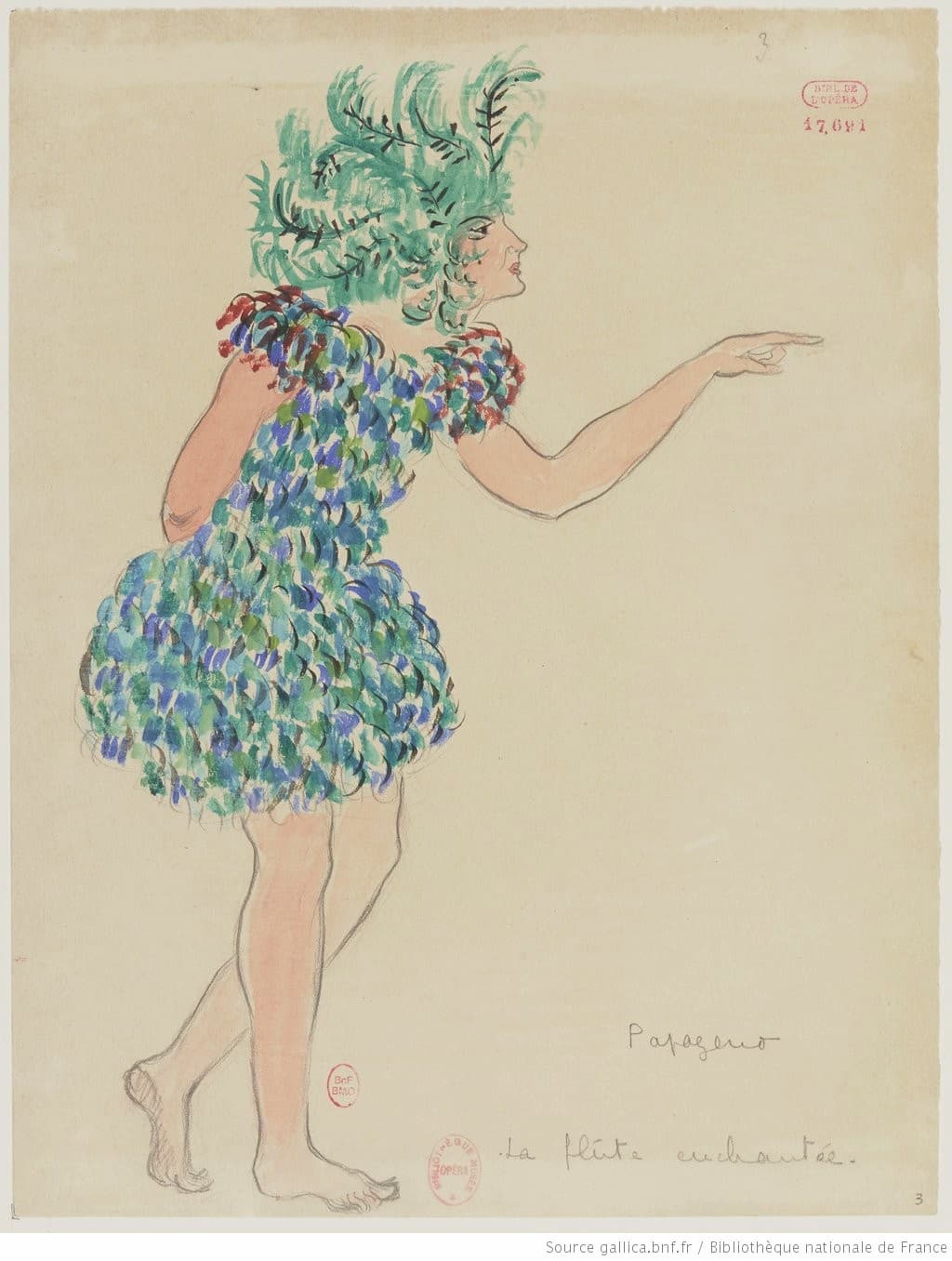
Drésa: La Flûte enchantée: Papageno, 1922 (Gallica ark:/12148/btv1b10524097w)

Drésa: La Flûte enchantée: Papagena, 1922 (Gallica ark:/12148/btv1b10524097w)

Drésa: La Flûte enchantée: Tamino, 1922 (Gallica ark:/12148/btv1b10524097w)
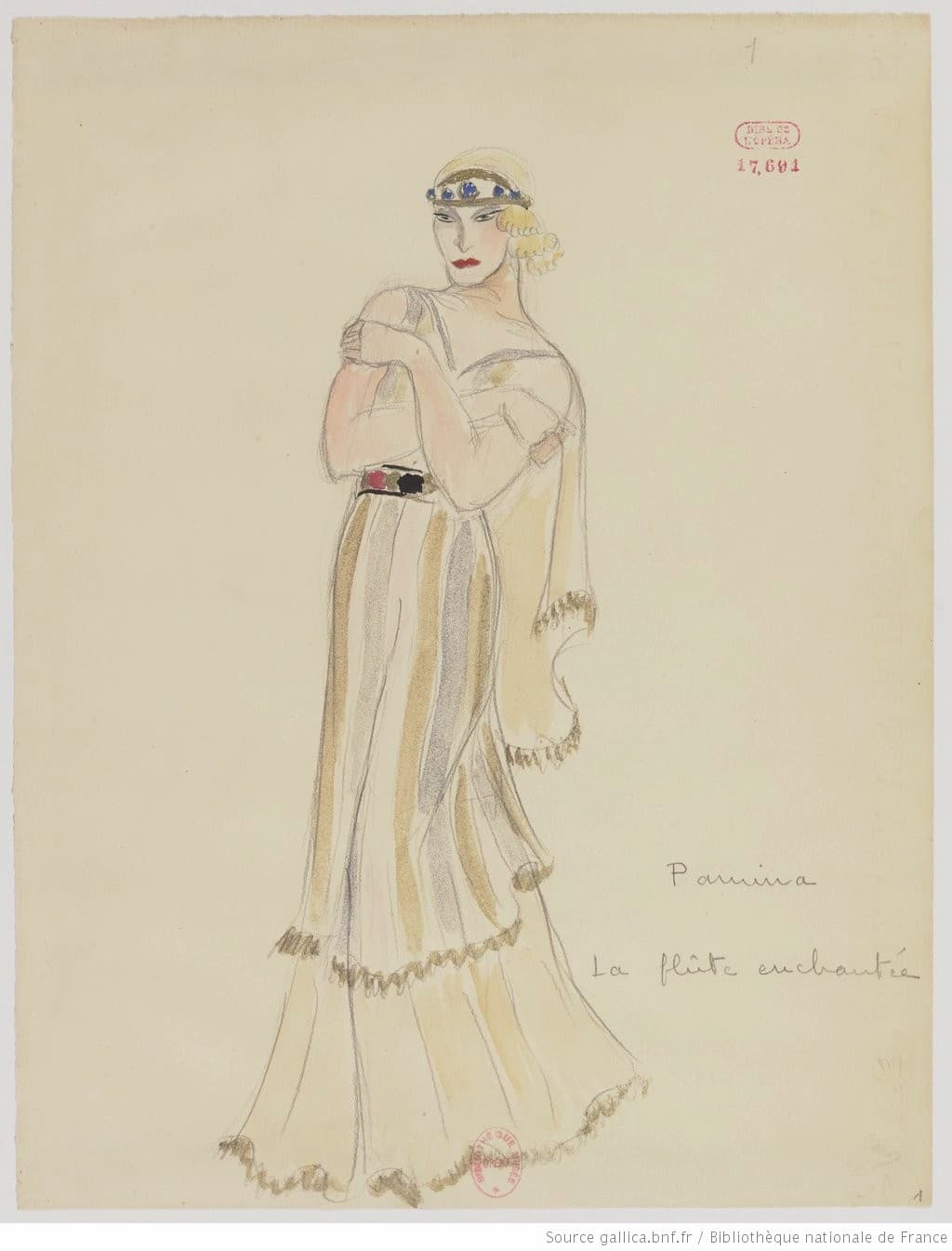
Drésa: La Flûte enchantée: Pamina, 1922 (Gallica ark:/12148/btv1b10524097w)
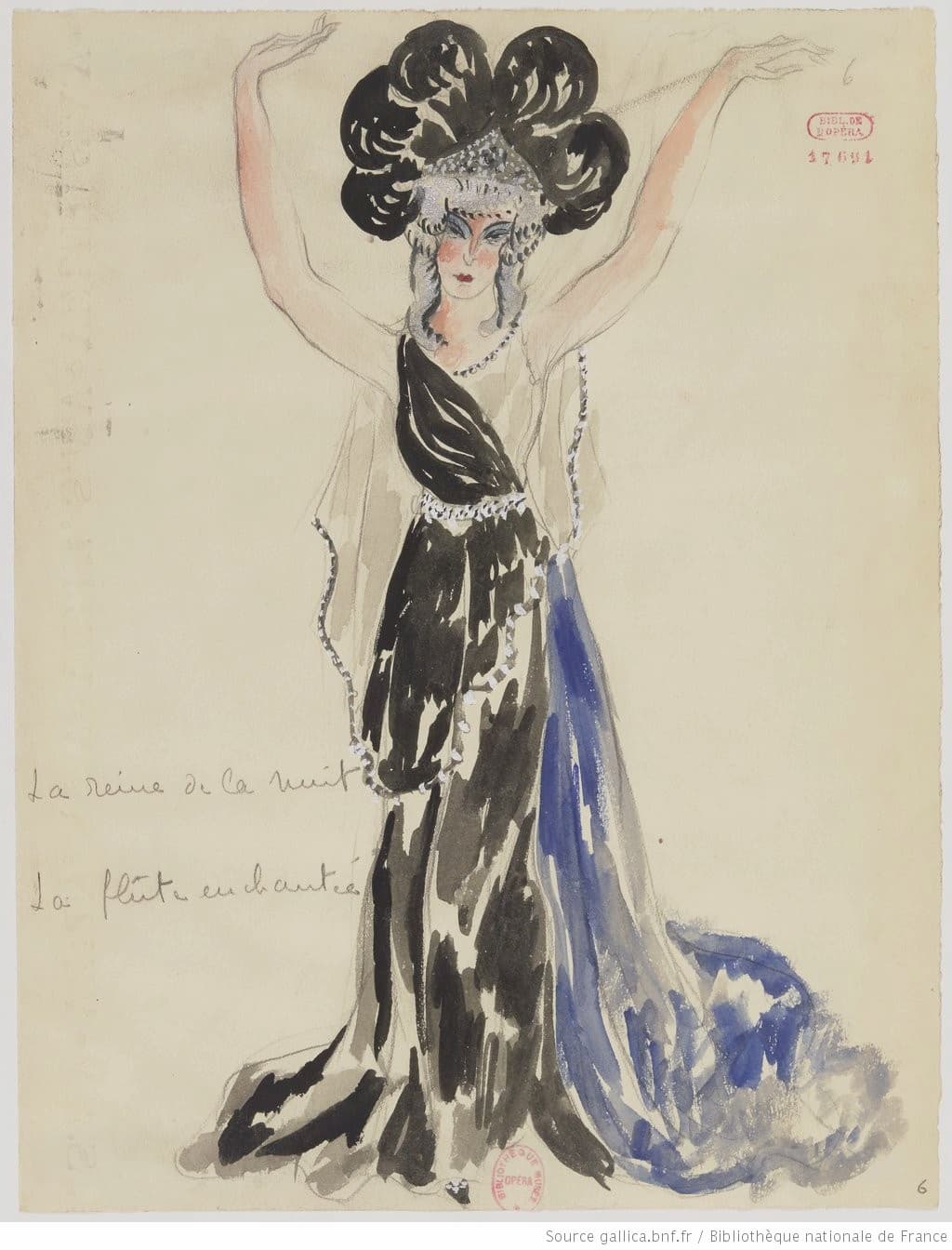
Drésa: La Flûte enchantée: Queen of Night, 1922 (Gallica ark:/12148/btv1b10524097w)
In Alfred Bruneau’s opera Le jardin du paradis, which was given its premiere in 1923 at the Paris Opéra with Drésa’s designs, comes from a story by Hans Christian Andersen where Prince Assur is given an impossible quest by his beloved, Princess Arabella. The collection on Gallica holds over 60 costume images for this opera.
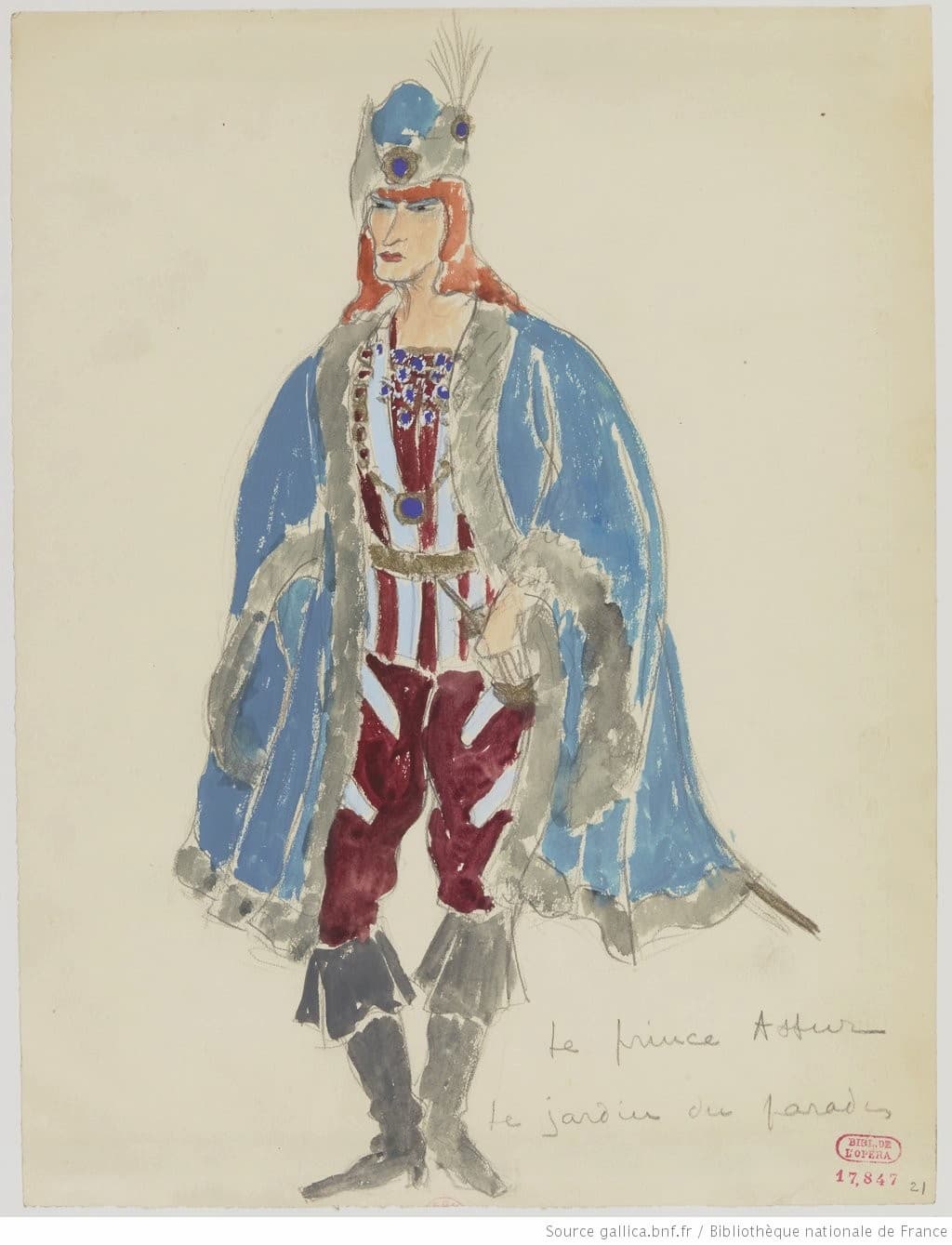
Drésa: Le jardin du paradis: Prince Assur, 1923 (Gallica ark:/12148/btv1b105241152)
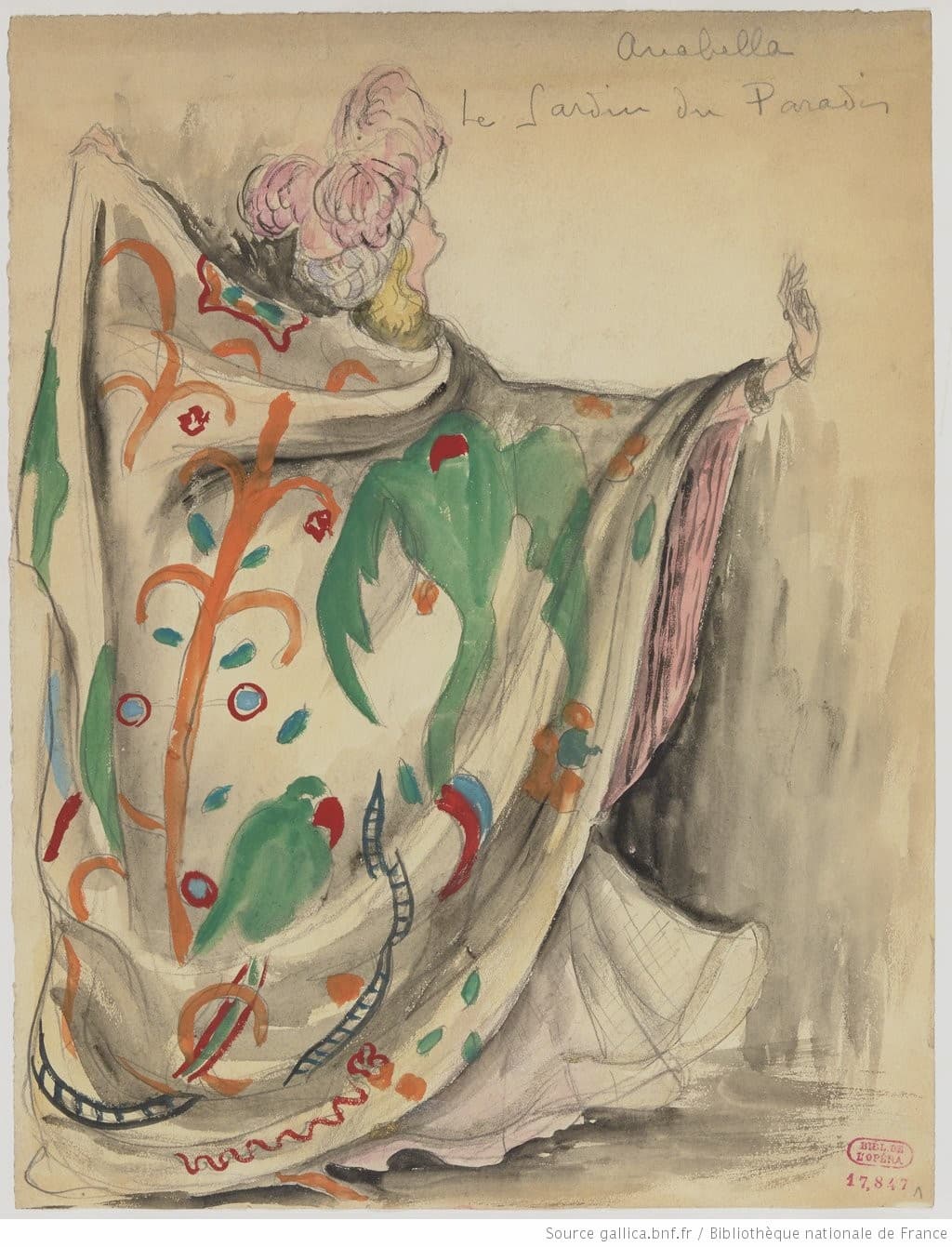
Drésa: Le jardin du paradis: Arabella, 1923 (Gallica ark:/12148/btv1b105241152)
For a 1927 production of Richard Strauss’ comic opera of 1910, Le chevalier à la rose (Der Rosenkavalier), Drésa gave us a Sophie in pink, the Marschallin in red, Octavian in silver with a pink lining, and the Baron in old-fashioned clothes.
Richard Strauss: Der Rosenkavalier, Op. 59, TrV 227 – Act I: Introduction (Royal Opera House Orchestra, Covent Garden; Andrew Davis, cond.)
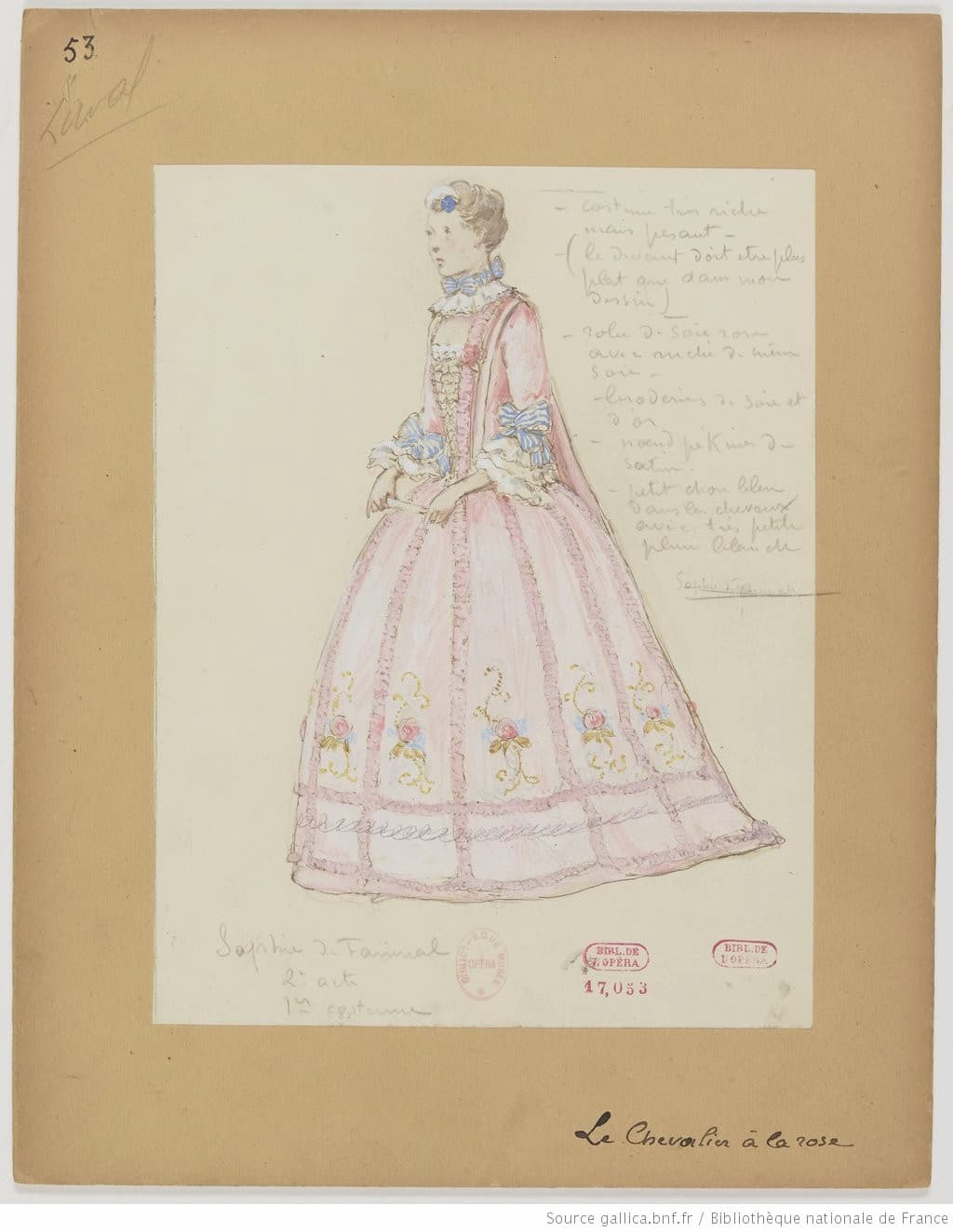
Drésa: Le chevalier à la rose, Sophie, 1927 (Gallica ark:/12148/btv1b105242553)
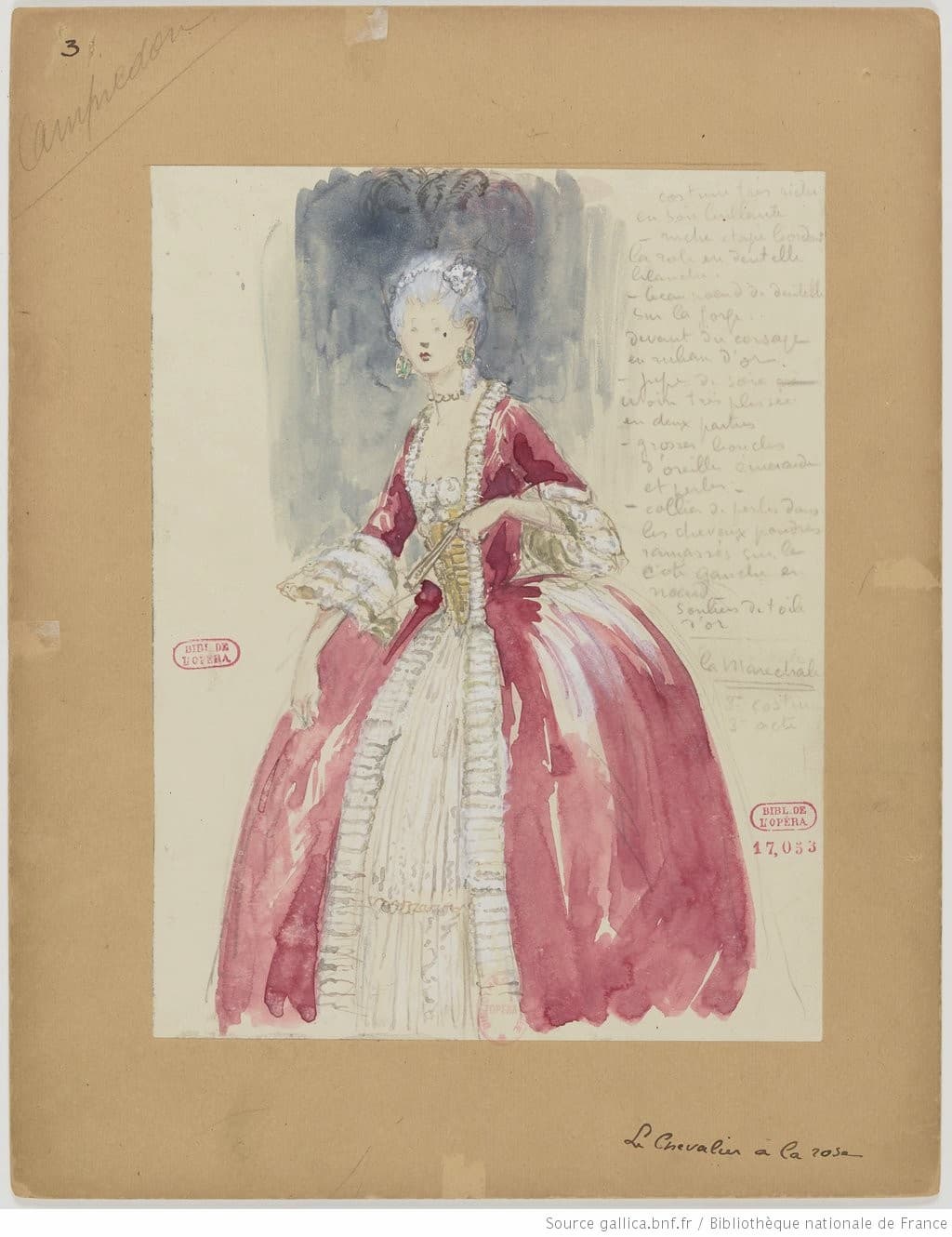
Drésa: Le chevalier à la rose, The Marschallin, 3rd act., 1927 (Gallica ark:/12148/btv1b105242553)
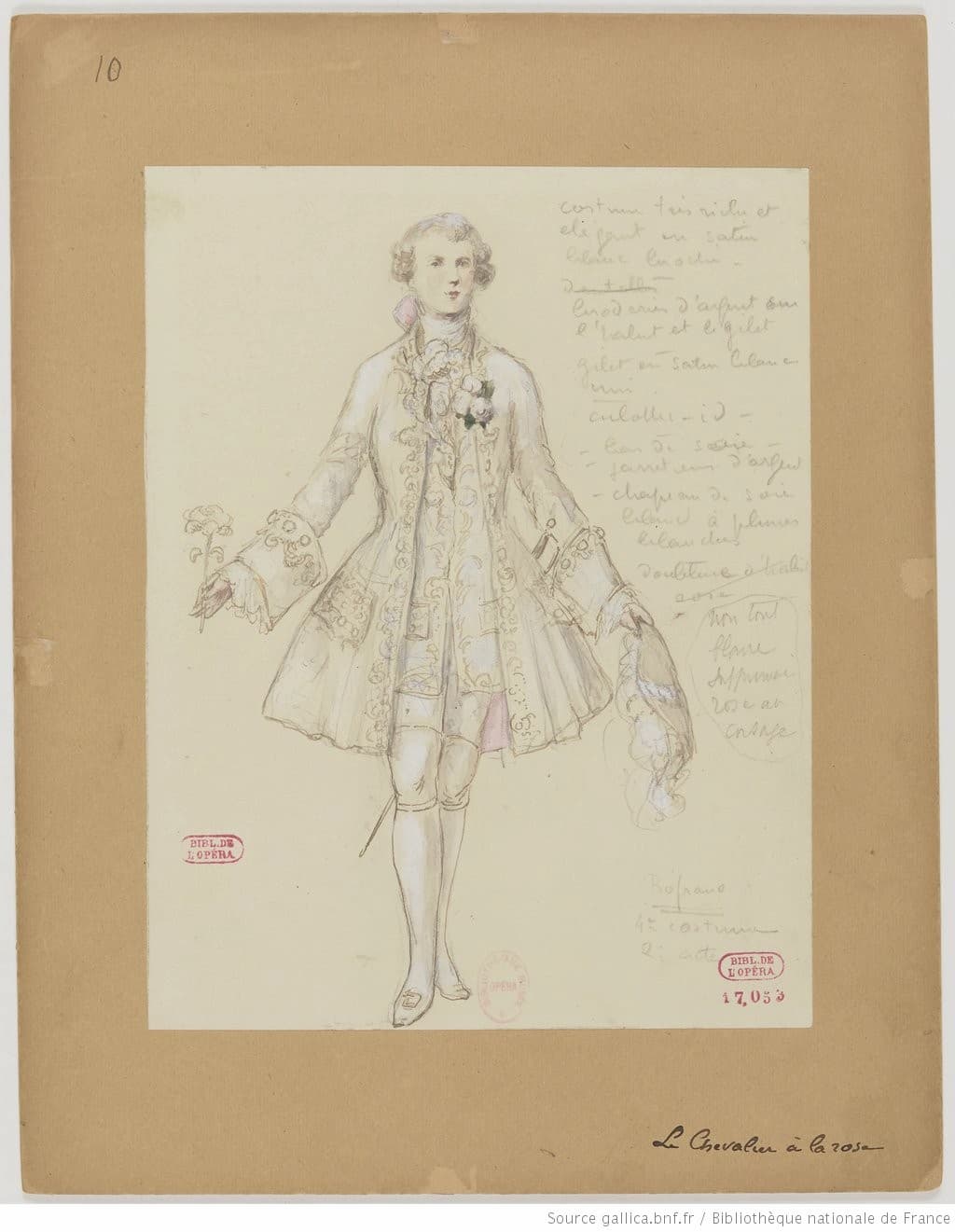
Drésa: Le chevalier à la rose, Octavian Count Rofrano, 2nd act, 4th costume, 1927 (Gallica ark:/12148/btv1b105242553)

Drésa: Le chevalier à la rose, The Baron, 1927 (Gallica ark:/12148/btv1b105242553)
For the 1928 production of Puccini’s Turandot we have both his rejected and accepted costumes for Ping and Pong, the two costumes for Calaf, and for Liu, and a lot of designs for the chorus / people. The changes for the Ping and Pong costumes seem to be making them more humorous and less traditional, especially with Pong’s new hard and striped clothes.
Giacomo Puccini: Turandot – Act I: Popolo di Pekino! (Fabrizio Beggi, Mandarin; Genoa Carlo Felice Theater Orchestra; Donato Renzetti, cond.)

Drésa: Turandot, Ping, 1928 (Gallica ark:/12148/btv1b10524258f)
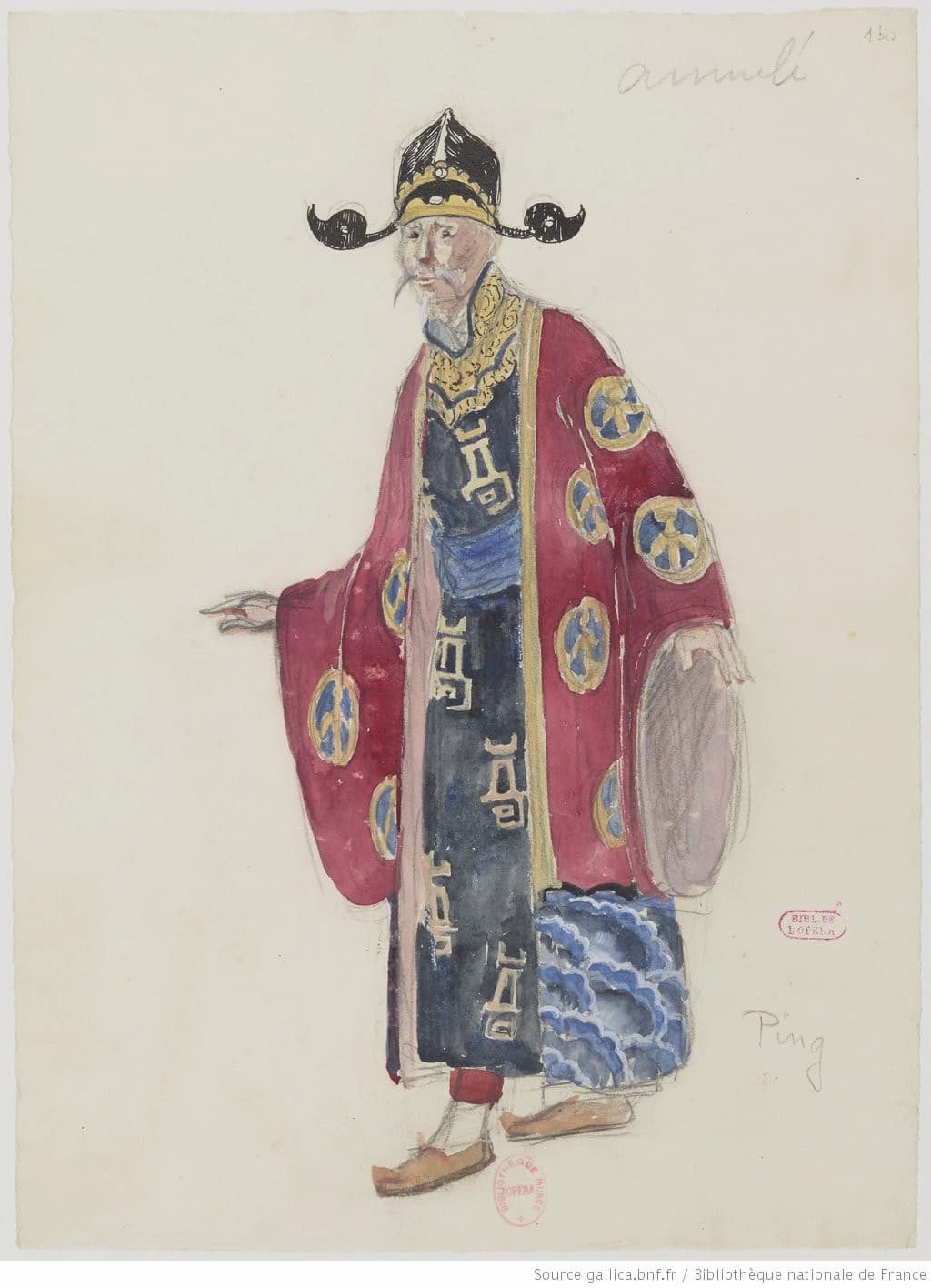
Drésa: Turandot, Ping – rejected, 1928 (Gallica ark:/12148/btv1b10524258f)

Drésa: Turandot, Pong, 1928 (Gallica ark:/12148/btv1b10524258f)
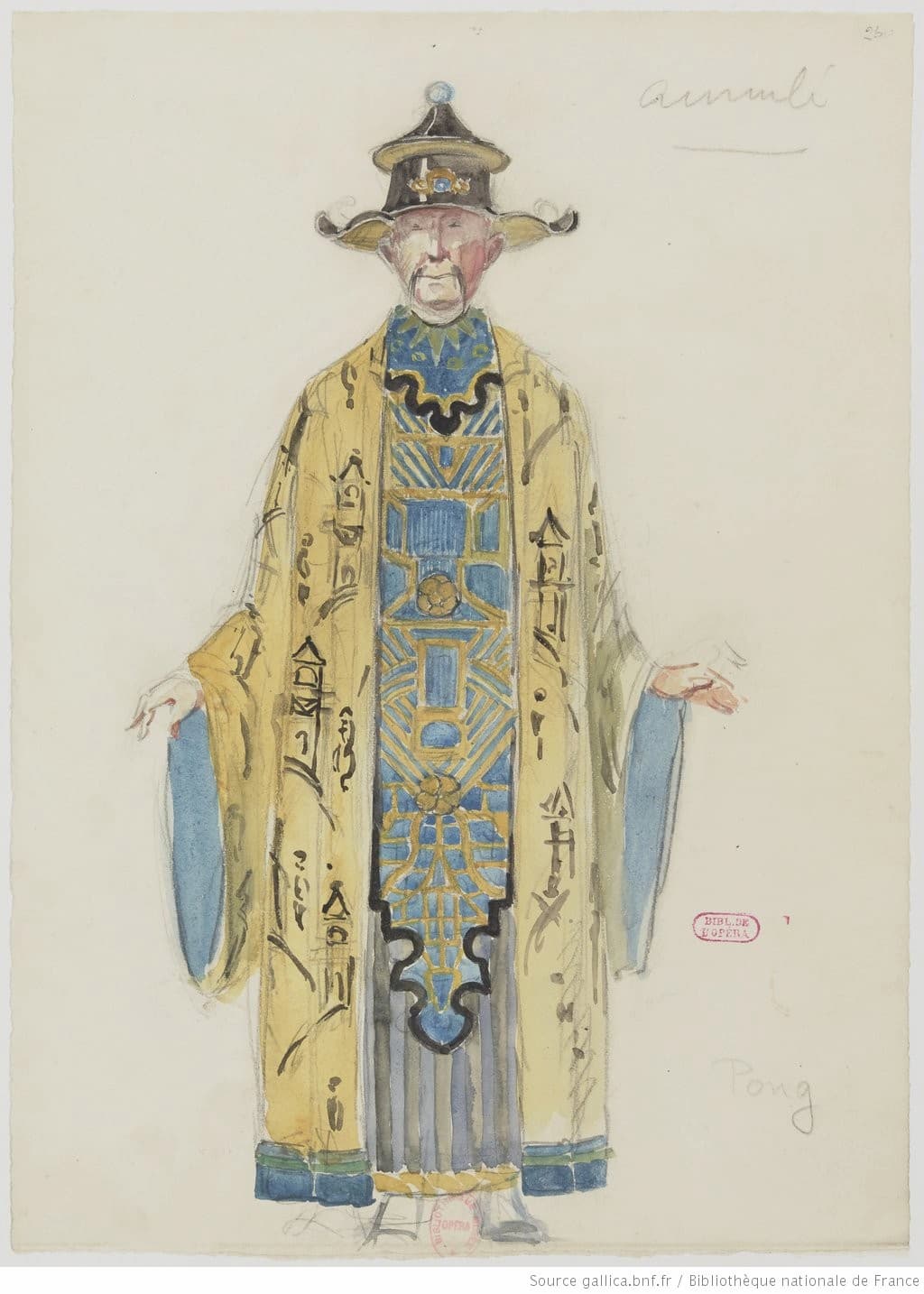
Drésa: Turandot, Pong – rejected, 1928 (Gallica ark:/12148/btv1b10524258f)
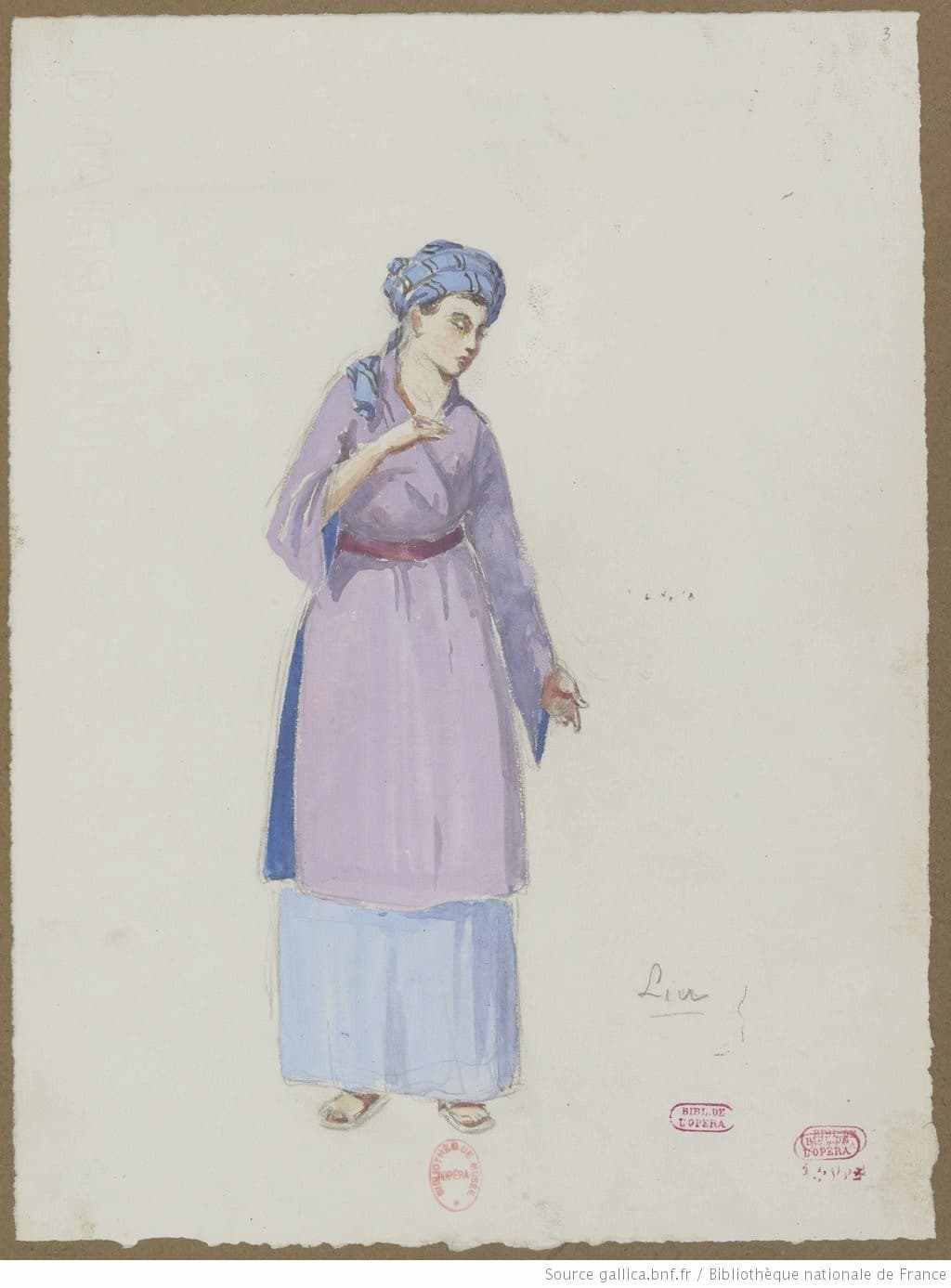
Drésa: Turandot, Liu, 1928 (Gallica ark:/12148/btv1b10524258f)
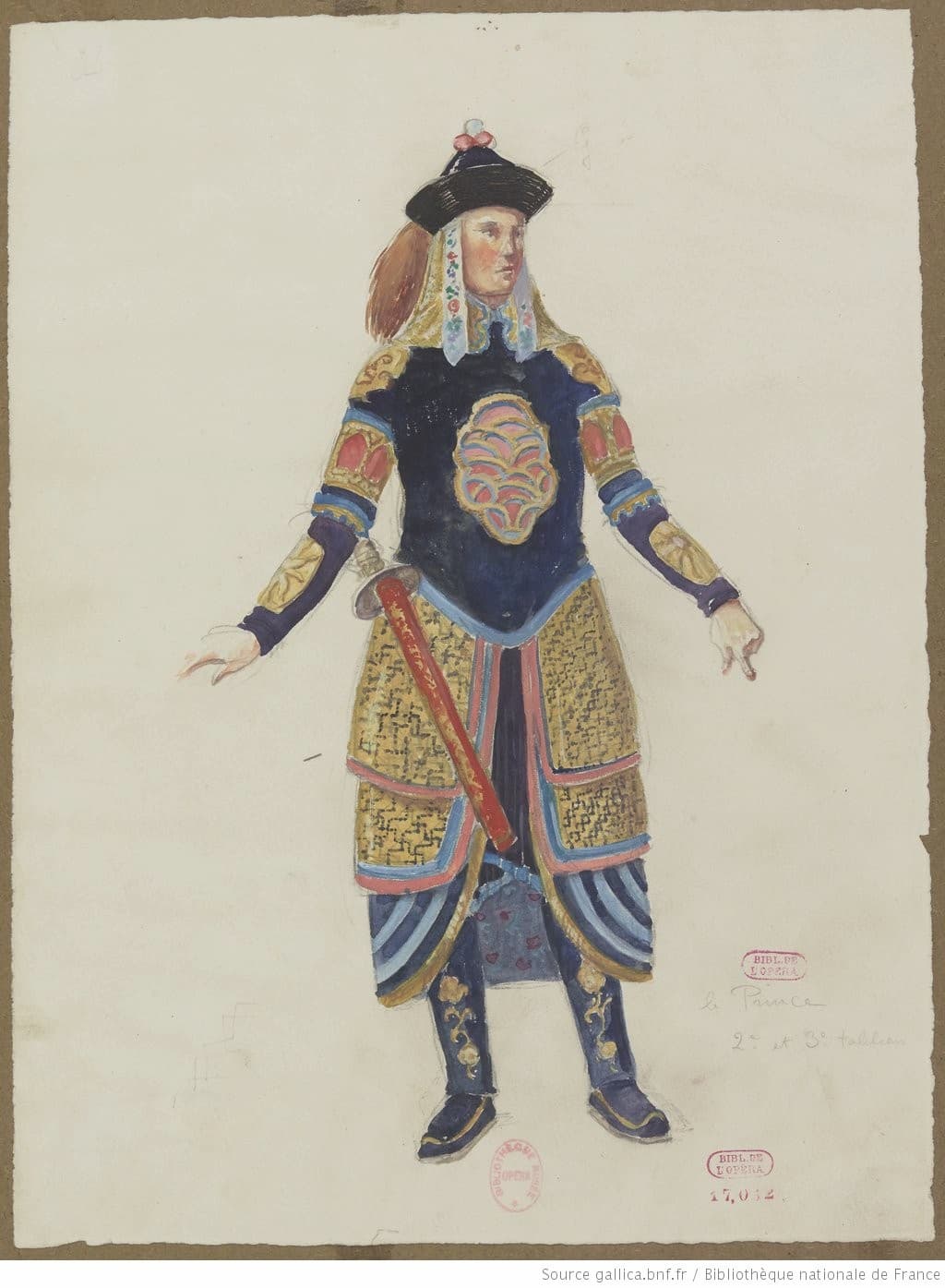
Drésa: Turandot, Le Prince (Calaf), 1928 (Gallica ark:/12148/btv1b10524258f)
All of the costumes for these operas may not be in the Gallica collections – it all depends on what was given to the library – but we do get an idea of how an artist approached works that were both traditional (Magic Flute) and also brand new (Turandot was only 2 years old when Paris put it on in 1928). What is remarkable is the vast number of designs that would be needed for not only the principals but also all the chorus members, dancers, miscellaneous servants, and all the other roles that go to fill up an opera stage.
For more of the best in classical music, sign up for our E-Newsletter


